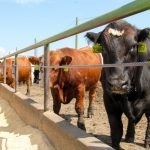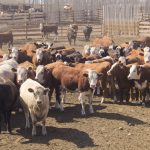
Tag Archives calves

Is it time for beef cow herd expansion?
Prices for calves have been strong, but it usually takes a year of high calf prices before expansion starts

Klassen: Yearling return to the lineup on strong demand
Frigid temperatures result in limited volumes

Klassen: Cattle producers anxious about 2024
No sales the first week of 2024 as markets assess inventory, plan strategy

Klassen: Feeder market quiets at year-end
Feeding margins have moved into negative territory, setting a negative tone for replacements

Klassen: Feeder market ends year on mixed sentiment
Some feedlots becoming backed up with heavier cattle, setting negative tone for feed complex

Klassen: Year-end buying interest boosts feeder market
Feedlot operators gearing up for shortfall in overall numbers in the first half of 2024

Klassen: Feeder market bounces on lower volumes
Feedlot operators believe yearling numbers will be down in March and April

Klassen: Strong demand continues to support feeder market
Significant downside risk ahead

Klassen: Canadian feeder buyers ignore weaker futures market
U.S. feedlot placements up four per cent

Klassen: Cash feeder prices soften on futures market uncertainty
Supplies are higher than expected as consumers reign in spending


